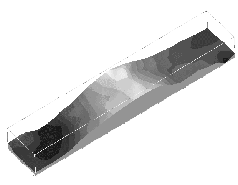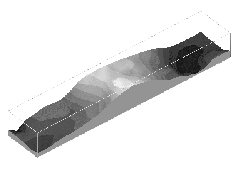|
Yes it’s the AGM - and yet again we are looking for a new Chairman. Adrian
has been doing a fine job over the last twelve months but has decided it is not his style
and is stepping down to make way for another likely candidate. Nominations are also
invited for all other committee positions (although Mary and myself are prepared to stand
once more for treasurer and secretary). Tom Glover has volunteered to stand as
Vice-Chairman, to help our new Chairman with his duties and to co-ordinate the booking of
speakers.
Constitution
I have enclosed a second draft of our proposed constitution for your approval (members
only). If everybody is happy with it, we will vote for its acceptance at the
meeting.
Resistivity Meter
After the endorsement to go ahead with the project at the last meeting, I purchased all
the necessary electronic parts from Maplin’s in Preston. (The till receipt was
longer than ASDA’s). I set about building the thing over Christmas and New Year
and, although my wife wasn’t too impressed with the smell of solder all over the
house, it is almost finished now. It did take a few more visits to Maplin’s, but the
electronics are now ready for testing and I will bring it to the next meeting for your
perusal. I’m still working on the frame, but I have some of the parts and a
good idea about its design.
For those who are interested, here is a quick explanation as to why the equipment is so
complicated (all we are doing is measuring the electrical resistance of the ground).
The problem is water; it is this that gives variations, dry for walls and roads, wet for
pits and ditches. If you just passed a DC current using a normal meter through the
soil, you would get an electrolytic effect between the probes, which would affect the
measurement. Also just by pushing electrically connected probes into the soil you
automatically create a small battery cell. Therefore AC current must be used with a
frequency high enough to avoid the above problems, but different than the standard 50 Hz
domestic supply, which can also be detected in the ground. The resulting current
must then be rectified back to DC to enable measurement with a voltmeter.
Software
The resulting data needs to be processed and presented in an easily understandable
way. Fortunately I have been able to download some evaluation software from the
Internet, which I have tested using the data from our Brimlow Farm project. As I
mentioned in last month’s newsletter, we borrowed a meter from Manchester University
prior to the excavation of the Roman Road in 1987. The plotting software I used then
was a home spun program I wrote on a Commodore-64 and was crude to say the least (although
I was proud of it at the time). Here is the result using the new package. The raised
lighter band crossing the middle of the section indicates the road’s position.
Roman Road at Brimlow
Farm |
 |
 |
| Look Northeast |
Looking Southwest |
The software is called Vumate and is supplied by ‘The Netherlands Research School
of Sedimentary Geology’. It is easy to use and should prove very useful to us
(wonderful thing this Internet).
Community Chest
As agreed at the last meeting, Tom Glover has forwarded our application to the
Community Chest for help towards the funding of this equipment. His is very hopeful of a
successful outcome.
Next Meeting
Wednesday 2nd February at our new venue the BP Centre (Scout HQ) in Greenough Street at
7.30 pm as usual. Apart from the AGM activities, we will be showing a video on Egypt
using projector equipment supplied by Dave Thomas.
Hope to see you there - B.A.
|



